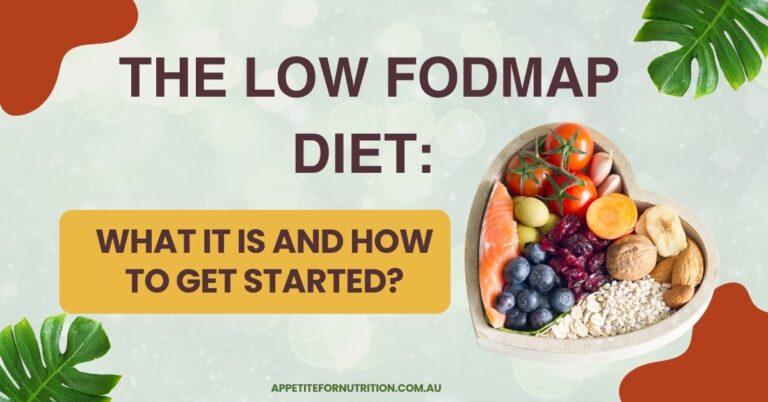Holiday Notice: We will be on break from 20 December, back 5 January. Emails checked periodically. 0491 169 399 | info@appetitefornutrition.com.au

Ingredient Intruders: 10 Unexpected Additives Lurking in Foods
When we think about the food we eat, we usually focus on the visible ingredients — the meats, vegetables, grains, and fruits that fill our plates.
But hidden in many packaged and processed foods are lesser-known ingredients that can affect your health in surprising ways.
These “ingredient intruders” are often added to enhance flavour, texture, or shelf life — yet some come with potential side effects worth knowing about.
Here are 10 unexpected food additives to watch for, plus practical tips from dietitians on how to make safer, smarter choices.
Learn more Can you trust Nutrition Claims on Food Packaging?
1. Monosodium Glutamate (MSG)
MSG is a common flavour enhancer found in savoury snacks, soups, sauces, and processed meats. It boosts umami taste but can cause sensitivity reactions in some people, including headaches or nausea.
Look for on labels: “Monosodium glutamate,” “yeast extract,” or “hydrolyzed protein.”
2. High Fructose Corn Syrup (HFCS)
A cheap and sweet additive found in soft drinks, breads, cereals, and condiments. Excess consumption has been linked to obesity, insulin resistance, and fatty liver disease.
Dietitian tip: Choose whole foods and beverages without added sugars — water, sparkling water, and 100% fruit juices in moderation.
3. Artificial Sweeteners
Sweeteners like aspartame, sucralose, and saccharin are used in “diet” or “sugar-free” products. While they cut calories, emerging research suggests possible effects on gut health and appetite regulation.
Better choice: Naturally sweet foods like fruit, or small amounts of honey, maple syrup, or stevia if tolerated.
4. Trans Fats
Trans fats are hydrogenated oils used to extend shelf life in margarine, baked goods, and fried foods. They raise LDL (bad) cholesterol and lower HDL (good) cholesterol — a dangerous combo for heart health.
Good to know: Australia has largely phased out artificial trans fats, but always check labels for “partially hydrogenated oil.”
5. Sodium Nitrite & Nitrate
These preservatives give cured meats like bacon and ham their colour and flavour but can form nitrosamines, compounds linked to higher cancer risk.
Dietitian tip: Limit processed meats and choose fresh, unprocessed protein sources when possible.
6. BHA (Butylated Hydroxyanisole) & BHT (Butylated Hydroxytoluene)
These synthetic antioxidants prevent fats from going rancid in cereals, snacks, and chewing gum. However, some studies link high exposure to potential carcinogenic effects.
Healthier swap: Choose products with natural preservatives like vitamin E (tocopherols) instead.
7. Sulfites
Found in dried fruits, wine, and some packaged potatoes, sulfites prevent spoilage and browning but may trigger asthma or allergic reactions in sensitive individuals.
Tip: Look for “sulfite-free” labels if you have sensitivities or asthma.
8. Carrageenan
A seaweed-derived thickener used in dairy alternatives, deli meats, and desserts. While natural, it may cause digestive irritation or inflammation in some people.
Better alternative: Choose brands that use guar gum or xanthan gum instead.
9. Potassium Bromate
Added to flour to strengthen dough and improve baking performance, potassium bromate is banned in many countries but still found in some baked goods. It’s been classified as a possible carcinogen in animals.
Tip: Buy bread labelled “bromate-free” or opt for fresh bakery items.
10. Propyl Gallate
This antioxidant extends the shelf life of fats and oils in processed foods. Research is limited, but early findings suggest potential hormone-disrupting effects.
Safer choice: Select products made with natural oils and check ingredient lists carefully.
Making Informed Choices About Food Additives
Food additives are not all harmful — many serve useful purposes like preservation and food safety. However, long-term exposure to certain artificial additives may have cumulative effects on health.
Here’s how to protect yourself and eat well:
Read ingredient labels carefully. If you can’t pronounce it, research it.
Choose whole, unprocessed foods whenever possible.
Cook from scratch to control what goes into your meals.
Consult a dietitian if you have allergies, sensitivities, or chronic conditions affected by diet.
A balanced diet rich in fruits, vegetables, whole grains, and lean proteins will naturally limit exposure to questionable additives — and support your body’s long-term health and vitality.
If you want to learn more, or have an assessment by an accredited practising dietitian, contact us today!
Learn More
How to Stay on Track with Your Diet: Low-Calorie Takeaway Tips from a Dietitian
Nutrition and the NDIS: How a Dietitian Can Help You Eat Well and Live Well
This blog was updated October 2025.
Frequency Asked Questions
Find quick answers to common questions
Our team of NDIS-registered dietitians helps clients make practical, evidence-based food decisions that fit their goals, lifestyle, and budget.
No — not all additives are bad. Some, such as vitamin C (ascorbic acid) or lecithin, are added to improve food safety and quality. The main concern comes from artificial or highly processed additives that can affect health when consumed regularly or in large amounts.
Always check the ingredient label. Additives may appear by name (e.g. monosodium glutamate) or as E-numbers (e.g. E621). If you see a long list of unfamiliar ingredients or numbers, it’s usually a sign of a highly processed product.
Generally, yes — but not always. Natural doesn’t automatically mean healthy. For example, carrageenan is plant-derived yet may cause digestive discomfort for some people. It’s best to focus on minimally processed foods and choose trusted brands that disclose all ingredients.
Additives often recommended to limit include trans fats, high-fructose corn syrup, sodium nitrite, BHA/BHT, and potassium bromate. These have been linked to inflammation, metabolic issues, or other potential health risks.
5. How can a dietitian help me reduce additives in my diet?
A dietitian can teach you how to read food labels, identify hidden ingredients, and create additive-free meal plans that still taste great. They can also help with sensitivities or conditions (like asthma or digestive issues) that may worsen with certain additives.
(Learn more or book a consultation with an Appetite for Nutrition dietitian to get started.)



